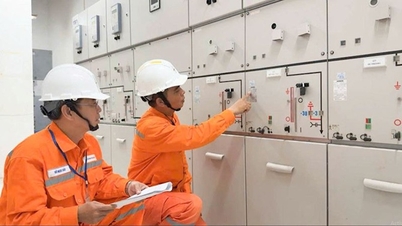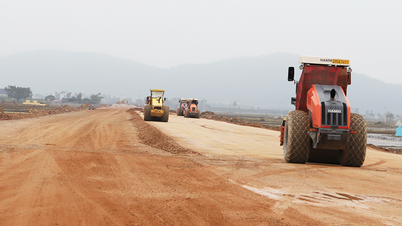DNVN - The Indian Space Research Organization (ISRO) announced that it had completed the launch of the satellite of the European Space Agency's (ESA) Proba-3 mission on December 5.

The launch was carried out from the Satish Dhawan Space Centre, located on Sriharikota Island in the Indian state of Andhra Pradesh.
Previously, on December 4, ESA requested to postpone the launch just before the time of implementation due to detecting an abnormality in the satellite propulsion system. The flight was carried out by the PSLV-C59 rocket, with a total weight of 320 tons. This is the first Indian rocket line to use liquid fuel since 1994, serving to put satellites and other payloads into orbit.
The rocket is designed to place the Proba-3 satellites into an elliptical orbit, reaching a maximum altitude of 60,000 km and a minimum of 600 km above the Earth's surface. This orbit allows the two satellites to maintain formation in space for about 6 hours, thereby reducing the effects of gravity and saving the fuel needed for calibration.
The Proba-3 mission consists of two satellites, the 310 kg Coronagraph and the 240 kg Occulter. Both instruments will fly in sync, maintaining a precise formation to study the corona – the outermost atmosphere of the Sun. The corona is hotter than the surface of the Sun, and is also the site of solar storms, an area of great scientific and practical value, ESA said.
Proba-3 is an international mission involving 14 countries, with Belgium being the largest financial contributor. In addition, many Belgian companies and scientists also play an important role in this project. Experts expect Proba-3 to be successful, creating an important milestone in research and expanding understanding of the universe.
Ganoderma (t/h)
Source: https://doanhnghiepvn.vn/cong-nghe/an-do-phong-ve-tinh-cua-chau-au-phuc-vu-nghien-cuu-mat-troi/20241206103040190


![[Photo] Prime Minister Pham Minh Chinh chairs meeting on railway projects](https://vphoto.vietnam.vn/thumb/1200x675/vietnam/resource/IMAGE/2025/10/23/1761206277171_dsc-9703-jpg.webp)


![[Photo] President Luong Cuong holds talks with South African President Matamela Cyril Ramaphosa](https://vphoto.vietnam.vn/thumb/1200x675/vietnam/resource/IMAGE/2025/10/23/1761221878741_ndo_br_1-8416-jpg.webp)

![[Photo] Prime Minister Pham Minh Chinh meets with South African President Matamela Cyril Ramaphosa](https://vphoto.vietnam.vn/thumb/1200x675/vietnam/resource/IMAGE/2025/10/23/1761226081024_dsc-9845-jpg.webp)








































































































Comment (0)